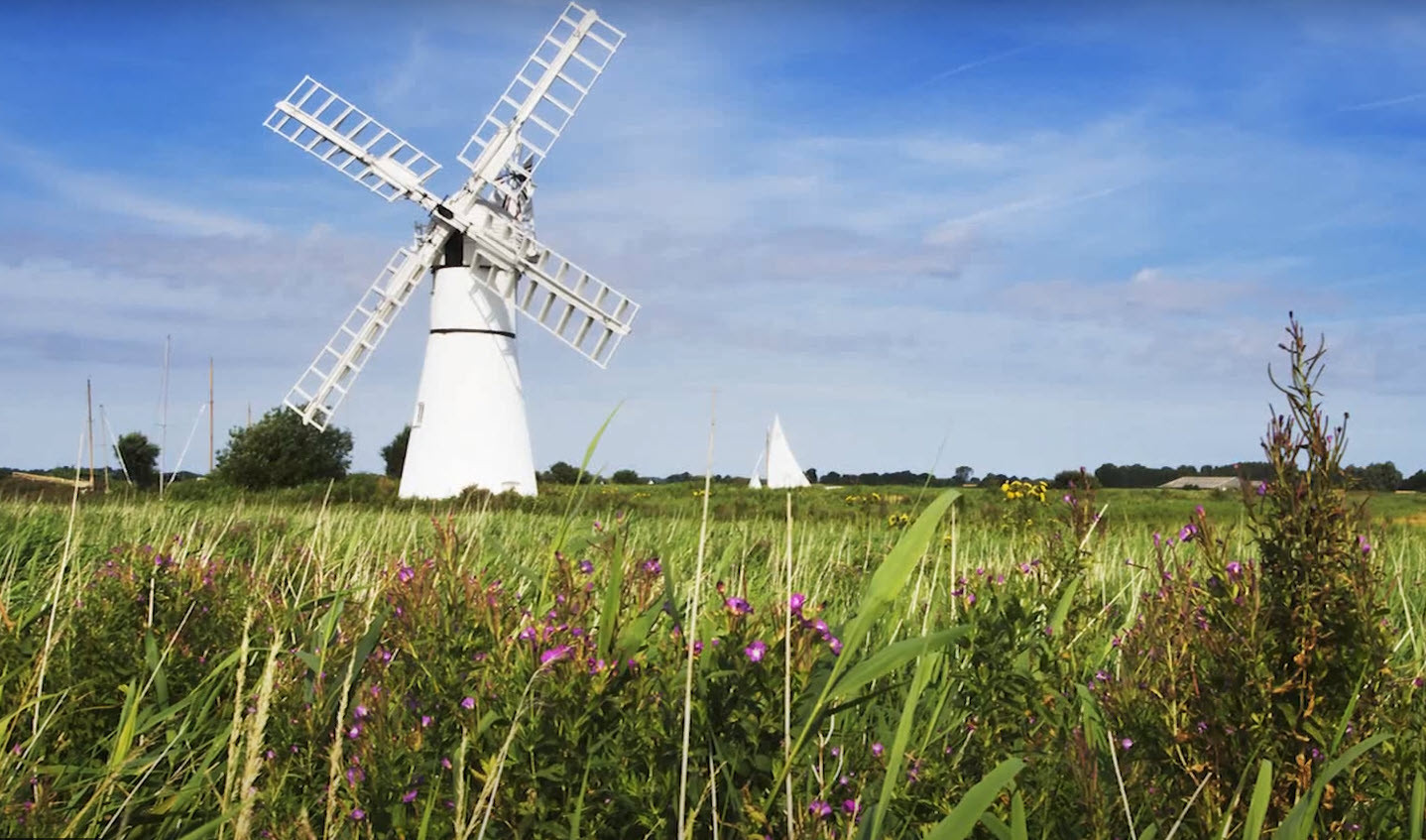Have you ever wondered about the rich history and vibrant traditions hidden within the Norfolk Broads? This unique wetland isn’t just about scenic boat rides and wildlife—it’s a treasure trove of cultural heritage waiting to be explored. From centuries-old windmills to fascinating local folklore, this guide uncovers the Broads’ cultural gems and why they matter today.
How the Norfolk Broads Were Formed
The Norfolk Broads, one of the UK’s most unique landscapes, is a vast network of rivers, lakes, and wetlands in East Anglia. But did you know that these iconic waterways weren’t created by nature alone? The Broads are actually a man-made wonder, shaped by centuries of human activity.
Here’s the incredible story of how the Norfolk Broads came to be—from medieval industry to accidental beauty.
1. The Medieval Origins: A Peat-Digging Boom
Why Was Peat So Valuable?
In medieval England (9th–14th centuries), peat—partially decayed plant matter—was a crucial fuel source. As populations grew, demand for peat skyrocketed, especially in Norfolk, where wood was scarce.
How Were the Broads Dug?
- Local monasteries and landowners organised large-scale peat extraction.
- Workers dug trenches (up to 12 feet deep) to cut and dry peat blocks.
- Over time, these pits expanded into vast excavations.
Fun Fact: The Broads were originally thought to be natural lakes until 1952, when botanist Joyce Lambert proved they were man-made!
2. The Great Flooding: How Water Took Over
By the 14th century, rising sea levels and frequent storms caused catastrophic flooding in Norfolk. The peat pits, now abandoned, and filled with water, creating the shallow lakes we see today.
Key Factors in the Broads’ Formation:
- Land Subsidence: Peat extraction weakened the ground, making it sink.
- Rising Sea Levels: The North Sea encroached, flooding low-lying areas.
- River Erosion: The Yare, Bure, and Waveney rivers widened, connecting the flooded pits.
Result: A 125-mile network of navigable waterways was born—unintentionally!
3. The Broads’ Transformation: From Industry to Leisure
The Decline of Peat (16th–18th Century)
- Coal replaced peat as the primary fuel, ending large-scale digging.
- The flooded pits became fishing grounds and trade routes.
The Victorian Era: Birth of Tourism
- Wealthy Victorians discovered the Broads as a picturesque boating destination.
- The arrival of railways (mid-1800s) made the area more accessible.
- Wherry yachts (traditional cargo boats) were repurposed for leisure cruises.
Did You Know? The term “Broad” comes from the Old English word “brād” (meaning “wide expanse of water”).
4. Modern Conservation: Protecting a Man-Made Masterpiece
By the 20th century, pollution and drainage threats endangered the Broads. Efforts to preserve them led to:
- 1978: Designation as a National Park (though technically a “member” of the family).
- 1989: Creation of the Broads Authority to manage the ecosystem.
- Today: A UNESCO Biosphere Reserve, balancing tourism and wildlife protection.
Conclusion: A Landscape Shaped by Humans—and Time
The Norfolk Broads are a rare example of human industry accidentally creating natural beauty. What began as medieval fuel pits evolved into one of Britain’s most beloved waterways.
Did this surprise you? Share your thoughts in the comments—or plan your own Broads adventure today!
Why the Broads’ Culture and Heritage Matter
The Norfolk Broads aren’t just a natural wonder; they’re a living testament to human ingenuity and tradition. Here’s why its cultural heritage deserves your attention:
- Historical Significance: The Broads are a man-made landscape, crafted by medieval peat excavations.
- Unique Traditions: From boat-building crafts to regional dialects, the Broads have a distinct identity.
- Conservation: Preserving heritage sites helps protect the area’s character for future generations.
Top Cultural Attractions in the Norfolk Broads
1. Historic Windmills and Drainage Mills
Once vital for land drainage and industry, these iconic structures now stand as picturesque landmarks. Don’t miss:
- Horsey Windpump: A restored National Trust gem offering panoramic views.
- Stracey Arms Mill: A striking white tower mill near Great Yarmouth.

2. Traditional Broads Sailing Craft
The Broads are home to unique wooden boats like the Norfolk Wherry, once the “lorries of the waterways.” Visit the Wherry Albion or the Martham Boat Building Museum to see these historic vessels.
3. Local Museums and Heritage Centres
- Norfolk Broads Yachting Museum: Showcases vintage boats and sailing history.
- Bishop Bonner’s Cottage (East Dereham): A medieval cottage with Broads-themed exhibits.
4. Folklore and Legends
Dive into tales of Black Shuck, the ghostly dog of the Broads, or the drowned villages rumoured to lie beneath Hickling Broad.
Pro Tips for Exploring Broads Heritage
- Time your visit: Many mills and museums are seasonal—check opening times.
- Take a guided tour: Local experts reveal hidden stories (e.g., Broads Authority tours).
- Support local crafts: Buy handmade souvenirs like reed baskets or boat models.
Conclusion: Step Into the Broads’ Living History
The Norfolk Broads’ culture is as captivating as its landscapes. Whether you’re a history buff or a curious traveller, these heritage sites offer a deeper connection to this magical wetland. Ready to explore? Book a traditional boat or share your favourite Broads legend in the comments!
